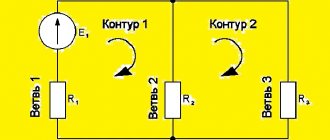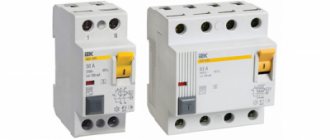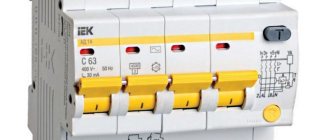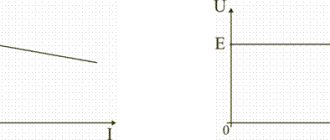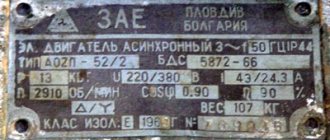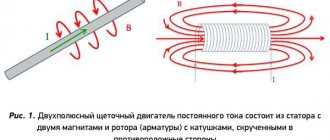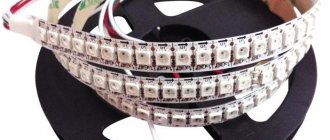Electrical energy is versatile, as it is easily converted into thermal, mechanical and other types. Despite the fact that the effects of electric current are well known, its essence has not yet been determined. Many of its properties are only partially consistent with generally accepted theories and hypotheses.
Due to the fact that electric current is invisible, it poses a particular danger to living organisms. It manifests itself primarily in the form of leakage current. For example, for various reasons, the same iron or other equipment may have damaged insulation. By touching it, a person closes the electrical circuit to himself, which often leads to dire consequences.
Therefore, an important direction in handling electricity is to protect a person from its leakage, otherwise differential current. Protective devices difavtomat and RCD are designed to solve this problem. What is the difference between an RCD and a difavtomat in simple words, what to choose and what is better?
Order dedicated TimeWeb hosting
The difference between an RCD and a difavtomat: characteristics
Currently, protective devices against differential current are presented in the form of difavtomat and RCD. The difference between an RCD and a difavtomat in relation to the differential current fencing is practically not noticeable. Additionally, the difavtomat, as a single design, has a built-in automatic shutdown feature that protects against overload and short circuit (short circuit) in the electrical circuit.
Numerical values of the technical characteristics of protective devices allow you to compare them and make an intelligent choice of one or another. The table shows the main technical characteristics of the difavtomat and the RCD.
In appearance, the differences between the RCD and the difavtomat are not so pronounced. Then what is the difference and how to tell the difference? The necessary information about the purpose of the devices, their characteristics and electrical circuits is usually printed on the device body. As noted in the table, the RCD is indicated by the abbreviations VDT, and the difavtomat is designated as AVDT.
WHY ARE DIFAUTOMATS AND RCDs INSTALLED? 2 reasons.
Modern wiring most often contains three wires. For example, sockets (Fig. 1) in addition to the phase and neutral contacts have a third - protective grounding. This terminal is usually connected via a plug and cord to the metal housings of electrical appliances.
Rice. 1. A modern outlet has a third wire - grounding.
If voltage is applied to the housing, then the electricity “drains” into the ground, and a so-called differential current or leakage current appears. What causes the risk of electrical injury
(when touching such a device), and secondly,
a fire
. To prevent such cases, protection devices are used - RCDs or differential circuit breakers.
RCD and difavtomat: choice
When choosing a particular protection device, you should first of all take into account the presence of a single-phase or three-phase electrical network, the magnitude of its voltage and the location of the RCD or automatic circuit breaker. Based on these conditions, according to the markings on the outside of the device and in the passport, it is necessary to select the required values of the relevant technical characteristics.
In a single-phase electrical network with a voltage of 220 V, as a rule, two-pole devices are used, and in a three-phase network of 380 V, 4-pole devices are used. To place them in a power shield you will need at least 2 and 4 modules, respectively. If you decide to choose an RCD, then you additionally need one more place to place the circuit breaker along with it.
RCDs and automatic devices are produced in two types: electromechanical and electronic. If overall dimensions are not significant, then preference should be given to electromechanical protective devices. Electronic devices are usually used when installed on a separate piece of electrical equipment, for example, in an electrical extension cord or outlet.
There is no clear answer to the question of which is better: a difavtomat or an RCD. On the one hand, the difavtomat allows you to save space in the electrical panel. Its effectiveness is manifested in a simple electrical network designed for one consumer with a small number of electrical appliances. Then it is not difficult to find a section of the circuit where, for example, an overload has occurred or the leakage current has exceeded the rated value. It also pays off when installing an electrical network from scratch.
When choosing protective devices, technical characteristics such as mains voltage, rated current and leakage current become important. For example, for a household network, devices with a rated leakage current of 30 mA are commonly used, and for wet rooms (bathroom, sauna, kitchen) its value should not exceed 10 mA. Other parameters should also be paid attention to, but they are not so significant.
Additionally, difavtomats are distinguished by the type of electromagnetic release. According to the value of the starting current, they have different sensitivities:
- B - devices are triggered when the current exceeds the norm by 3-5 times. They are preferable in the country when the load on the electrical network is minimal.
- C - the period of maximum overload ranges from 5-10 times. Installation of devices is common in residential buildings and apartments.
- D - a power outage is observed when the rated current exceeds its value by 10-20 times. Devices are installed, as a rule, at facilities with high energy consumption (enterprises, factories, office premises).
These characteristics are taken into account when choosing along with the current limitation class. Sudden voltage drops or maximum network load can cause an emergency situation, so I distinguish three classes of current limiting circuit breakers. Class 3 automatic machines are popular as the fastest ones. However, they have a high cost.
A discussion of the principles of operation of an RCD and a difavtomat allows us to understand to some extent how an RCD differs from a difavtomat in simple words. To understand it, it is just right to have basic knowledge in the field of electrical engineering.
Operating principle of RCD
According to the international classification and current standards, the RCD is considered a residual current controlled circuit breaker (RCC). You should always remember that an RCD is not able to protect against short circuits in the electrical network and people touching the phase and neutral wires at the same time.
The operating principle of the RCD is based on recording leakage currents, usually with a differential current transformer (1) based on a torus. The design of a two-pole RCD uses a ferrite ring with two power and one control windings.
In the initial position, the electric current entering the equipment I1 and leaving it I2 creates magnetic fluxes F1 and F2 of different directions. The vector sum of the values of the flowing currents in the phase and neutral cores corresponds to zero, since the induced magnetic fields F1 and F2 are mutually compensated and no potential difference is created in the control winding.
The operating principle of the RCD is based on the imbalance of currents and magnetic fields, as a result of which leakage current I0 of the phase wire to the ground is observed (touching, sparking, insulation failure, etc.). Then a potential difference arises in the control winding of the transformer (2).
If the leakage current value is higher than the nominal threshold, then the actuator (3) is activated, the power contacts are released and the mains voltage is turned off. The functionality of the RCD is checked using the “Test” button (4). When it is pressed, by connecting a resistance between the phase and neutral conductors, an excess of the leakage current is simulated.
The principle of operation of electromechanical and electronic RCDs is the same, but in the second case the device operates in active mode and only when voltage is present. Additionally, the electronic RCD uses an electronic circuit with amplifier A, which increases the potential difference of the control winding of the transformer for normal operation of relay K.
On a note. If there is no voltage in one of the phases from which the three-phase RCD is powered, or if the neutral wire is disconnected, it is not able to disconnect the other two phases of the power supply.
RCD or differential circuit breaker? What to choose?
03.06.2021
Electrical appliances have long been part of our everyday life, and we do not always perceive them as a source of increased danger. The most famous device for protecting electrical networks, both domestic and industrial, is, of course, a circuit breaker. Its purpose is to turn off the power to the electrical circuit when a short circuit or overload occurs in the network. But the dangers are not limited to overloads and short circuits. There are many other reasons that can lead to fires, or even electric shock to a person. These include an imbalance of currents in the phase and neutral wires, a decrease in the insulation resistance of the wire, a violation of the wire insulation at the junction of the wires, touching live parts of devices, etc. In all of these cases, the circuit breaker simply will not trip.
To ensure electrical safety in the event of such situations, residual current devices (RCDs) and automatic residual current switches (RCCBs), or “residual circuit breakers,” are used.
Before determining what we should be guided by when choosing a particular device, let's figure it out - what is the difference between an RCD and a circuit breaker? Unlike a conventional circuit breaker, which is installed only on a phase wire, the RCD is connected to both conductors - both phase and neutral. The RCD design includes a circuit that compares the current in the phase and neutral conductors. If these currents are equal, there is no current leakage. As soon as a difference appears between the currents of the phase and neutral wires, the device is triggered and breaks both lines - both phase and neutral.
The main parameter of the residual current device is the “Rated residual current” (IDn). Currents above 30mA pose a danger to human life. Therefore, RCDs with a rated leakage current of 30 mA can be considered universal, because they protect against electric shock and fire, and allow you to connect fairly large loads without false alarms. RCDs with a rated value of less than 30mA provide excellent protection for people from electric shock, but do not provide fire safety and can turn off under heavy loads. You can display the so-called in a separate group. “fire-fighting” RCDs with leakage current values from 100 to 300 mA, which are installed at the entrance to an apartment or house. Its main function is protection against fires caused by leakage current, but not protection against electric shock. For this group, there are two main selection criteria - device selectivity (the ability to set a shutdown delay) and a large value of the rated leakage current.
After we have figured out what an RCD is and what it is needed for, we can move on to differential current circuit breakers. Everything is much simpler here. In essence, such a device is a “two in one” solution - a circuit breaker and an RCD in a common housing. The selection of a circuit breaker based on rated current and time-current characteristics is almost completely consistent with the selection of a conventional circuit breaker. The only difference is the need to select a circuit breaker based on leakage current and differential protection class. As for the leakage current, in everyday life, as a rule, only two ratings are used:
- 10mA for installation on lines in which only one powerful device is installed, or a consumer in which two dangerous factors are combined: electricity and water (dishwasher, electric water heater, etc.).
- 30mA for lines with a group of sockets and outdoor lighting.
The differential protection class shows what type of current leakage this device protects against. The choice of protection class is determined by the type of load. So, if this is equipment with microprocessors, then class A is used. For lighting lines, or the inclusion of simple devices, class AC is suitable. Connecting class S and G circuit breakers makes sense for multi-level protection systems. Designations and explanations of protection classes are in the table:
| Letter designation | Graphic designation | Decoding | Application area |
| AC | Responses to alternating sinusoidal current | Placed on lines to which simple equipment without electronic control is connected | |
| A | Responses to sinusoidal alternating current and pulsating direct current | Used on lines that power electronically controlled equipment | |
| IN | Captures variable, impulse, constant and smoothed constant. | Mainly used in production with a large number of different equipment | |
| S | With a shutdown time delay of 200-300 ms | In complex circuits | |
| G | With a shutdown time delay of 60-80 ms | In complex circuits |
Now we can return to the main question - what to choose? As such, there is no direct answer to this question... The main difference between RCDs and RCBOs is their functions, cost, connection method and space occupied in the panel. However, there is one point - the reliability of the device. The simpler the device, the higher its reliability. And in this sense, the difavtomat loses to the RCD. What to use is up to each consumer to decide for themselves.
Operating principle of the automatic machine
According to current documents, a differential circuit breaker is abbreviated as AVDT (Automatic Breaker controlled by Differential Current with protection against current overload). It combines the operations of a circuit breaker and an RCD, protecting the controlled circuit from short circuits and overloads, as well as from differential currents.
The principle of operation of the difavtomat in relation to leakage currents is similar to the operation of an RCD. The difavtomat module, which protects the differential current, as in the RCD, can also be electromechanical or electronic.
The automatic circuit breaker assembly of a difavtomat is usually located in a phase circuit and its operating principle is based on the properties of an electromagnetic and thermal release. Structurally, they are made in the form of a solenoid with a coil and a bimetallic plate, respectively.
When a short circuit occurs, the rapidly increasing inductor current creates a magnetic field that drives the moving core, and the controlled circuit opens. At the moment of overload, the flowing current heats up the bimetallic plate, it bends and breaks the contacts of the electrical network. The existing arc suppression chamber ensures their preservation from the electric arc.
Difavtomats from a number of companies are equipped with an internal alarm indicating network disconnection due to thermal protection, short circuit or excess leakage current. Indicators allow you to determine the reason for the operation of the automatic device, which creates efficiency during operation.
